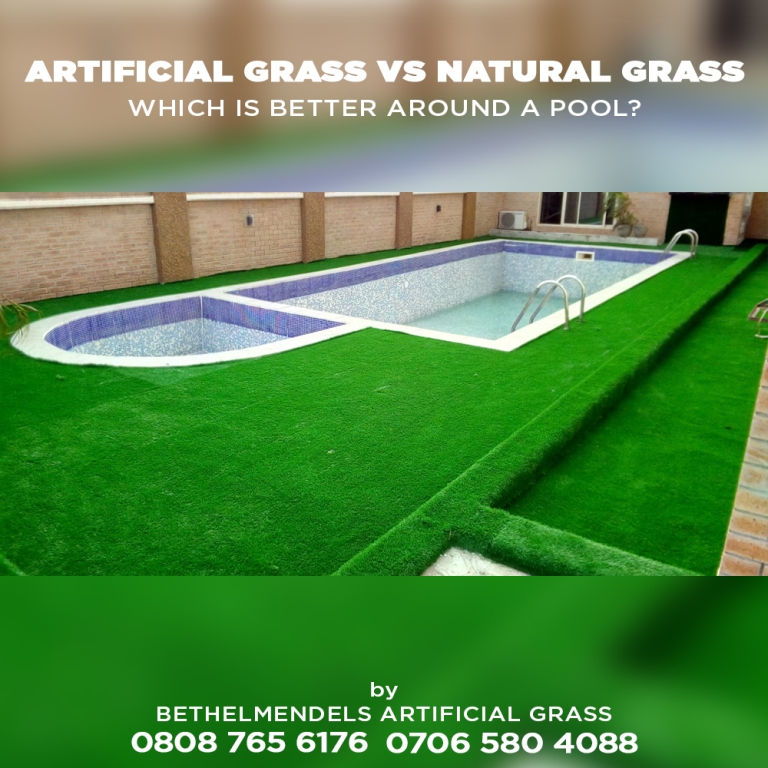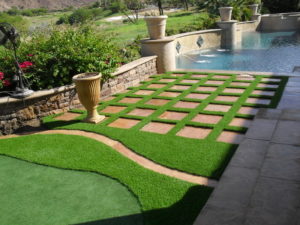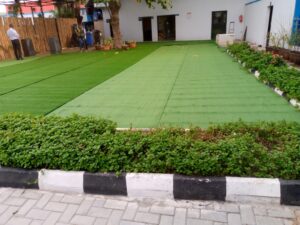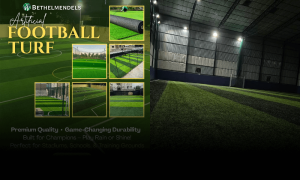Dealing with Drainage, Mud or Puddles
You can also expect splashing, diving, playing, and climbing in and out of the pool to introduce a lot of water to the ground around your pool. Too much water is not good for natural grass, but an artificial turf lawn can handle excessive water just fine. The permeable backing also allows the water to properly drain so that you do not have to worry about puddles.
Additionally, synthetic turf is less likely to become slippery when wet, which helps to increase the safety of your children, pets, and guests. As an added bonus, manufactured grass will not get muddy from all of that extra water; whereas, natural grass surely would.
Chemicals and Clean Up
Another concern with natural grass is the introduction of chemicals, which can go both ways. If you use pesticides or herbicides on your lawn, they can be introduced to your pool water during the application process or on bare feet running across the grass to get in the pool. Going the other way, pool chemicals can be introduced into your lawn by water being splashed out of the pool. Chlorine and other chemicals can kill natural grass.
It is also quite likely that blades of grass will be introduced into your pool water, which leads to more time spent skimming the pool to remove to debris and can lead to clogged filters. And, of course, wet feet running from the pool to the house can also track grass blades and mud into your home.
Both natural grass and artificial turf are nice for laying out or lounging with friends or family at a pool party. Artificial grass may be the preferable option here as well, though, since you can expect to be bothered by fewer bugs and do not have to worry about mud. While both conventional grass and manufactured grass will heat up in direct sunlight on hot days, synthetic turf tends to get warmer than natural grass. This can be easily remedied with a shade structure, laying out a towel or spraying down the grass with water to cool it off quickly. You will find that manufactured lawns cool off rapidly as soon as shade is introduced or they are no longer in direct sunlight.








